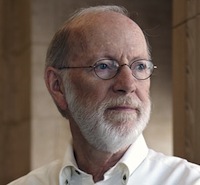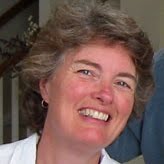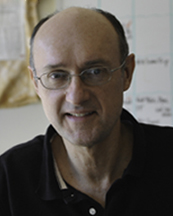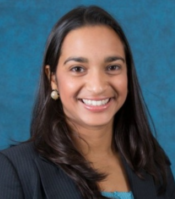

The January 30 issue of The New Yorker includes an eye-opening article on the extreme efforts being taken by many Silicon Valley executives—and others—to plan for an apocalypse. “Doomsday Prep for the Super-Rich,” by Evan Osnos, explains how the paragons of American enterprise are preparing for the worst.
The article quotes Reid Hoffman, a co-founder of LinkedIn, as estimating that over 50 percent of Silicon Valley billionaires have made some provisions for surviving should there be a breakdown of society—termed “apocalypse insurance” in the inner circles of that set. Some, like Paypal founder and Trump advisor, Peter Thiel, are buying real estate in New Zealand.
Some others are buying multi-million-dollar luxury condominiums in converted nuclear missile silos in Kansas. The first such conversion, The Survival Condo Project, by Larry Hall has already sold out its first compound of 15 hardened subterranean apartments and is beginning the next. Armed guards with huge bunkers of ammunition stand ready to defend those apartments, which include five years’ of stored food, aquaponics facilities to produce fresh food, and provisions for medical and dental care, including an operating room.

For the 99 Percent, there is mushrooming attendance at survivalism and prepper trade shows. The premier of the National Geographic Channel’s reality TV show, Doomsday Preppers, in 2012 drew four million viewers and during its first season became the channel’s most popular show ever. A more recent show, Naked and Afraid, appeals to the same viewers, with the added enticement of survival contestants being naked in wild places. “Apocalypse” has become it’s own genre of literature, with such gems as One Second After, by William Forstchen, which I recently read.

Should we all be preppers?
I’ve been thinking about this a lot, recently—fueled, no doubt, by my reading of One Second After and Ted Koppel’s nonfiction book about the risks to the power grid from cyberterrorism: Lights Out. As I’ve long argued—and as I practice at our Vermont farm—it makes a lot of sense to become more self-reliant. We grow and store a lot of our own food; our house can be heated with a few toasters’ worth of electricity (or by our back-up wood stove); we have a potable water supply that is separate from our deep well with submersible pump; and our grid-connected solar array maintains some functionality when the grid is down.
While individual actions like ours indeed help us achieve a reasonable level of resilience, far more important are actions that will help to make our region and nation more resilient. Enhancing the resilience of our communities is the best investment we can make in our own long-term resilience.

Except for a few billionaires who can afford to create their isolated, distant, safe-havens—and who have the means to get there in the event of an emergency—ensuring a safe future for the vast majority of us depends on our working together.
If our farm were the only farm in our immediate area, we would have little chance of maintaining control of it in the event of a major, regional or national emergency—such as loss of our electric grid for several months. As the post-apocalyptic novels and movies that are becoming so common point out, such oases of self-sufficiency would be quickly overrun by hungry neighbors or refugees from cities. But if there were hundreds or thousands of such farms scattered around our region, the prospects of weathering such disasters would be greatly improved.

Doomsday prepping means supporting widespread community resilience
If I were one of those Silicon Valley billionaires who invest in apocalypse insurance, I would put the bulk of that investment into measures for creating a more resilient—and more sustainable—society. I would donate generously to local community centers and events that strengthen community cohesiveness. I would spend more money on my weekly grocery bill to buy local food and support local farms. I would lobby for the support of distributed, renewable energy systems with power storage capability. I would invest in company facilities that not only serve the needs of my business but also serve the local communities as resilience hubs.
The trend of the wealthy to make provisions to protect only their immediate families will ultimately fail if the only beneficiaries are themselves and not the larger society.

The scenarios presented in Ted Koppel’s Light’s Out and dozens of doomsday apocalypse novels and movies are scary—very scary. But if we really want to do something about these risks—protecting our families and our way of life—we have to commit to a strong agenda of community resilience.
That’s the message I want to take to those Silicon Valley executives who invest in apocalypse insurance. Yes, prepare for the unexpected disaster or economic collapse, but do it mostly by bringing about widespread community resilience.
# # # # #
Along with founding the Resilient Design Institute in 2012, Alex is founder of BuildingGreen, Inc. To keep up with his latest articles and musings, you can sign up for his Twitter feed. To receive e-mail notices of new blogs, sign up at the top of the page.





















Yes! I really appreciate all of this. I also read both of these books (Lights Out first… then because of it, I read One Second After) fairly recently & have thought a good bit about both (and the potential for this type of scenario). I love what you’re saying about widespread community resilience though, because I don’t believe that anything less will allow for any *real* resilience for individuals / families. I think it’s difficult to begin to approach these types of things with the neighbors, though, without coming off as someone they may peg as a tin-foil-hat person. I’m not sure what the answer is, but am considering. Thanks for sharing your thoughts here.
To survive , our man must find the best gadgets for the job. Some will keep him connected. I use it to charge my Petzl head torch, which beams through the murky, swirling drizzle as the night draws in. How might an apocalypse come?
Thank you Alex, it’s important to look at the facts of what matters for long term resilience and sustainability. People have watched too much TV and are expecting these sudden drama turning points, like a plot-line of their favorite Netflix show, but this expectation is completely out of touch. Community level people-power is the key to achieving long-term resilience, and also key to implementing changes in the social, economic, and political structures that currently are unsustainable or broken.
This recent article by Daniel Aldrich of Northeastern University underscores your point: “In Disaster Recovery, Social Networks Matter More Than Bottled Water and Batteries” http://www.citylab.com/cityfixer/2017/02/recovering-from-disasters-social-networks-matter-more-than-bottled-water-and-batteries/516726/?utm_source=SFFB
Very much agree with you on this Alex. And I don´t think we need an apocolypse to reap the benefits of greater community resilience and sustainablility. Freedom to live in a bunker (or a gated comunity for that matter) surrounded by armed guards is no freedom. Resilience impresses me as a good way to explore the vulnerabilities of our current way of life and encourages perspective. We have no idea what technology or catastrophy may lie ahead, but what we do know is that we will still be human and we will need a community.